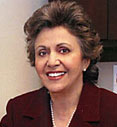Defining dyslexia
There are many published definitions of dyslexia. While these can be useful in improving understanding of the parameters of dyslexia, DFNZ believes it is critical that debate on defining dyslexia does not become the main agenda or an excuse for inaction. Its focus is on practical impacts of being dyslexic and how constructive action can best be taken.
DFNZ supports a broad spectrum view of dyslexia. General themes of this are viewing dyslexia as: an alternative or atypical way of thinking; having a proven neurobiological basis; is heredity; impacting a broad spectrum of skills; occurring across a range of intellectual abilities; and individuals facing unexpected difficulties in acquiring certain skills and not making expected progress.
Difficulties with literacy and numeracy are a common feature of dyslexia, and the most immediate attribute is a problem in decoding words and their meanings. However, this is still only one aspect of a broader spectrum of difficulties. The broad spectrum view acknowledges that dyslexia can cause issues with a much wider range of skills such as auditory and information processing, planning and organising, motor skills, short-term memory and concentration. Some of these can make it especially challenging for individuals to follow instructions, turn thoughts into words and finish work on time.
Below are definitions used by key international drivers of the dyslexia agenda.
 |
|
Neil Mackay, international dyslexia consultant and core contributor to DFNZ’s 4D programme, defines dyslexia as: “A specific learning difference which is constitutional in origin and which, for a given level of ability, may cause unexpected difficulties in the acquisition of certain literacy and numeracy skills.” |
 |
|
Dr Sally Shaywitz, from the Yale Center for Dyslexia and Creativity, also refers to unexpected difficulties: “…dyslexia is an unexpected difficulty in reading. Unexpected refers to children and adults who appear to have all the factors necessary to become good readers: intelligence, motivation and exposure to reasonable reading instruction – and yet struggle to read.” |
For more on this visit Dr Shaywitz’s knol – Dyslexia: The science of reading and dyslexia.
To find out more about her other areas of research click here.
High level UK Government consultant Sir Jim Rose, in a June 2009 report commissioned by the Government – Identifying and Teaching Children and Young People with Dyslexia and Literacy Difficulties – cites the following working definition, agreed with the UK Department for Children, Schools and Families:
-
Dyslexia is a learning difficulty that primarily affects the skills involved in accurate and fluent word reading and spelling
-
Characteristic features of dyslexia are difficulties in phonological awareness, verbal memory and verbal processing speed
-
Dyslexia occurs across the range of intellectual abilities
-
It is best thought of as a continuum, not a distinct category, as there are no clear cut-off points
-
Co-occurring difficulties may be seen in aspects of language, motor coordination, mental calculation, concentration and personal organisation but these are not, by themselves, markers of dyslexia
-
A good indication of the severity and persistence of dyslexic difficulties can be gained by examining how the individual responds or has responded to well founded intervention
Sir Jim notes in his report, (p9) that: “Despite different definitions of dyslexia, expert views very largely agree on two basic points. First, dyslexia is identifiable as a developmental difficulty of language learning and cognition. In other words, it is now widely accepted that dyslexia exists. Secondly, the long running debate about its existence should give way to building professional expertise in identifying dyslexia and developing effective ways to help learners overcome its effects.”
To read the full report click here.
The New Zealand Ministry of Education’s working definition of dyslexia was specifically designed, in collaboration with DFNZ and other stakeholders, to provide a basis for action by enabling teachers and other education professionals to identify, think about and address dyslexia in constructive ways.
It says that: “Dyslexia is a spectrum of specific learning difficulties and is evident when accurate and/or fluent reading and writing skills, particularly phonological awareness, develop incompletely or with great difficulty. This may include difficulties with one or more of reading, writing, spelling, or musical notation. Students with dyslexia do not make expected progress in these areas in spite of good teaching and the type of support that would be helpful for most other children...”
For the full definition and further detail click here.
In the US, the International Dyslexia Association proposes the following definition: “Dyslexia is one of several distinct learning disabilities. It is a specific language-based disorder of constitutional origin characterised by difficulties in single word decoding.”
|